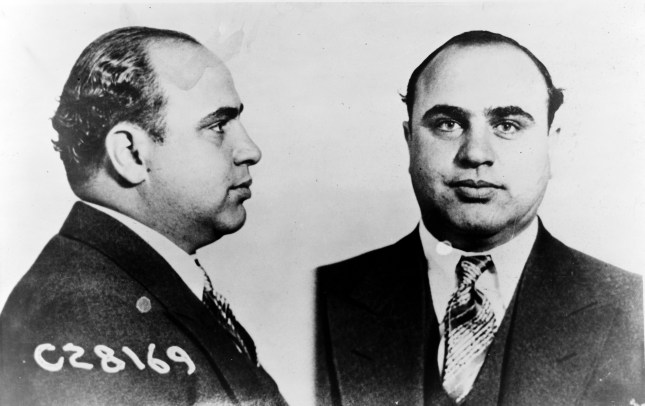
Today is the anniversary of the conviction, in 1931, of the notorious Chicago gangster Alphonse ‘Scarface’ Capone. He was famous for aphorisms like, ‘you can get much further with a kind word, and a gun, than you can with a kind word alone’. He was probably also responsible for the deaths of more than thirty fellow human beings. Did he go down for murder? Was he sentenced to a stretch in Federal prison for racketeering? Did he even end up in Alcatraz Prison on San Francisco bay for bootlegging? None of the above. Famously he went to jail for tax evasion. Al Capone was, in the eyes of the law, a white collar criminal.
‘I am like any other man. All I do is supply a demand’ he once said. And this simple businessman, with the ethics of Wall Street banker and the sensibilities of a shark with a taste for Bondi Beach surfers, took advantage of America’s Prohibition legislation of the 1920s to make a huge fortune for himself and others.
In 1925 at the tender age of twenty-six Capone took over illegal breweries on Chicago’s south side, and a liquor distribution operation that stretched as far as the Canadian border. Capone, whose mantra was ‘I just give people what they want’, became something of a folk hero in an era where millions of drinkers were happy to encourage the flouting of an utterly senseless law. He encouraged and clearly enjoyed the attention of the media, including the new medium of radio. Basing himself in the Chicago suburb of Cicero, where he controlled local politics, Capone quickly became a national celebrity. His only rival was an Irish-American gang led by a lesser hoodlum named Bugs Moran, which dominated organised crime on the north side of the city.
While local and Federal prosecutors took an interest in Capone, he also managed to bribe countless public officials and policemen. He made things difficult for investigators by never registering any property in his own name. This was despite the fact that he owned a mansion in Miami where he spent more and more time in the late 1920s. He also never opened a bank account, though I suppose that probably looked quite clever after the Wall Street Crash.
Capone’s hold on the Chicago criminal underworld was abetted by the accession to the office of mayor of ‘Big’ Bill Thompson, a man who never saw a bribe he didn’t like. Capone allegedly bankrolled Big Bills 1927 campaign to the tune of $250,000 – a huge sum of money back then.
Capone’s most notorious ‘hit’ came on 14 February 1929, the so-called St Valentine’s Day massacre!
Bugs Moran’s HQ was a warehouse and garage at 2122 North Clark Street. On the morning of 14 February a group of policemen showed up to raid the premises. Except that they weren’t cops, they were Capone’s gunmen. They lined up the seven occupants of the warehouse (one of whom was not even a member of Moran’s gang) and opened fire, killing all seven in the most horrendous crime of the Prohibition era.
The killings quickly shattered any aura of romance or begrudging tolerance of Capone’s activities, after photographs of the slain mobsters were published in local and national papers. Scarface, so-called because of an old knife wound, had overreached himself. Law enforcement in Chicago and Florida now began to harass Capone and threaten his operation
His ultimate downfall, however, was due to a 1927 Supreme Court ruling that illegal earnings were subject to income tax just like all legitimate earnings – evidence was adduced, in a 1931 Federal trial, of Capone’s massive spending, and in October of that year he was convicted of tax evasion, sentenced to eleven years in jail, fined $50,000 and found liable for the payment of more than $200,000 in back taxes and interest. He served the first part of his sentence in a Federal prison in Atlanta, where he was also officially diagnosed with syphilis and gonorrhoea


He was later transferred to Alcatraz in San Francisco Bay, the high security Federal prison, becoming, after the Birdman, Robert Stroud, the facility’s most famous inmate. When he was released in 1939, already in the advanced stages of syphilis, he headed for Florida where he died in his mansion in 1947.
Capone is believed to have been involved in the deaths of thirty-three men between 1923 and 1930, including the seven Valentine’s Day Massacre victims. Despite suggestions, in the Brian de Palma film, The Untouchables, that he personally beat three men to death with a baseball bat, it is unlikely that he actually killed any of the thirty-three himself. That’s fake history.
You must be logged in to post a comment.